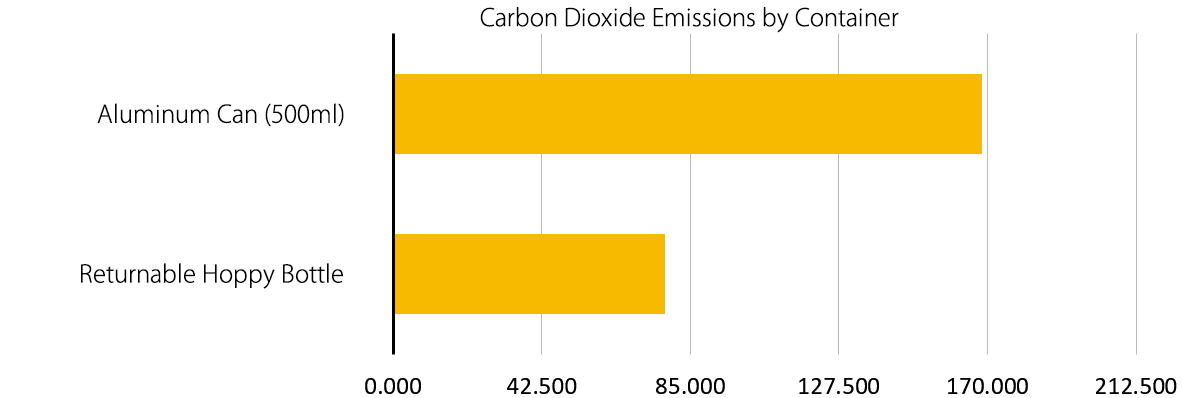CSR
01
episode 1
Glass Bottles Have a Massive CO2 Advantage
Our products come in glass bottles. Glass bottles have a set of characteristics that make them excellent containers. Firstly, they preserve the flavor of the product, but are also an environmentally friendly material that saves resources and energy, and their quality does not deteriorate even after repeated use.
With a recycling rate of over 90%, aluminum cans also have merit as a resource and energy-efficient container. However, we can better understand the environmental impact of both beverage containers by comparing them using a life cycle inventory analysis. This method examines the environmental impact of a container from its birth until it is disposed, or recycled, taking into account the transportation and manufacturing of materials.
Using lifecycle inventory analysis, we examined the carbon dioxide emissions of aluminum cans and reusable glass bottles. Once the pull-top of an aluminum can is opened, it must be sent for recycling to be reused, and the aluminum must be melted down to make another can. On the other hand, reusable glass bottles are usually reused about 20 times. In other words, once they are made, they can be reused 20 times. Taking this into account, and including carbon dioxide emissions during production and transportation, reusable bottles emit about 1/60th the amount of carbon dioxide of aluminum cans. This confirms the superior environmental performance of reusable bottles in helping to prevent global warming.
episode 1
Glass Bottles Have a Massive CO2 Advantage
Can be read horizontally on a large screen
×
Detailed Data and Explanation 1
We examined the carbon dioxide emissions of aluminum cans and returnable bottles.
To determine the carbon dioxide emissions of a container, one must look at the container's entire lifetime, from creation to disposal. This lifecycle also includes the carbon dioxide emissions of the trucks that transport the materials and products, and the carbon dioxide emissions generated by incineration for disposal.
Calculating these factors, the carbon dioxide emissions per gram of an aluminum can is 9.016 g/CO2. Returnable bottles (per bottle) emit 0.216g/CO2. (Assuming that returnable bottles are reused 20 times and the recovery rate is 100%)
The weight of an aluminum can is 18.69g (500 ml can), while a returnable bottle of Hoppy is 360g.
(As a side note, the ideal bottle weight to prevent bottle breakage is generally the same as that of the content. Hoppy's returnable bottles are exactly in line with this ideal value. The weight of the bottle is 360g for a content of 360ml. Incidentally, a large beer bottle weighs 605 grams for a content of 633 ml.)
18.69g×9.016=168.51g-CO2
Based on the above figures, the carbon dioxide emissions for an aluminum can is calculated to be 18.69g x 9.016 = 168.51g-CO2
The carbon dioxide emissions for a returnable bottle of Hoppy is 360g x 0.216 = 77.76g-CO2.
The carbon dioxide emissions of returnable bottles are much lower than those of aluminum cans, indicating the superior environmental performance of returnable bottles.


※Calculated based on data from the Ministry of the Environment.
(Reference) Ministry of the Environment
https://www.env.go.jp/press/files/jp/19747.pdf